Are Impatiens Perennials or Annuals? It Depends!
Impatiens plants are some of our favorite flowers to include in our garden bed or container plantings. Basically, every where we can plant them, we want to put them. The impatiens flowers are so colorful and low maintenance, combined with their shade tolerance, they make for amazing filler plants that produce a plethora of blooms.
We have asked ourselves many times, are impatiens perennials? Or, is there any conditions under which they will be perennials? We want them to be! However, we have learned that the answer is a little bit complex, so let’s have a look at this.
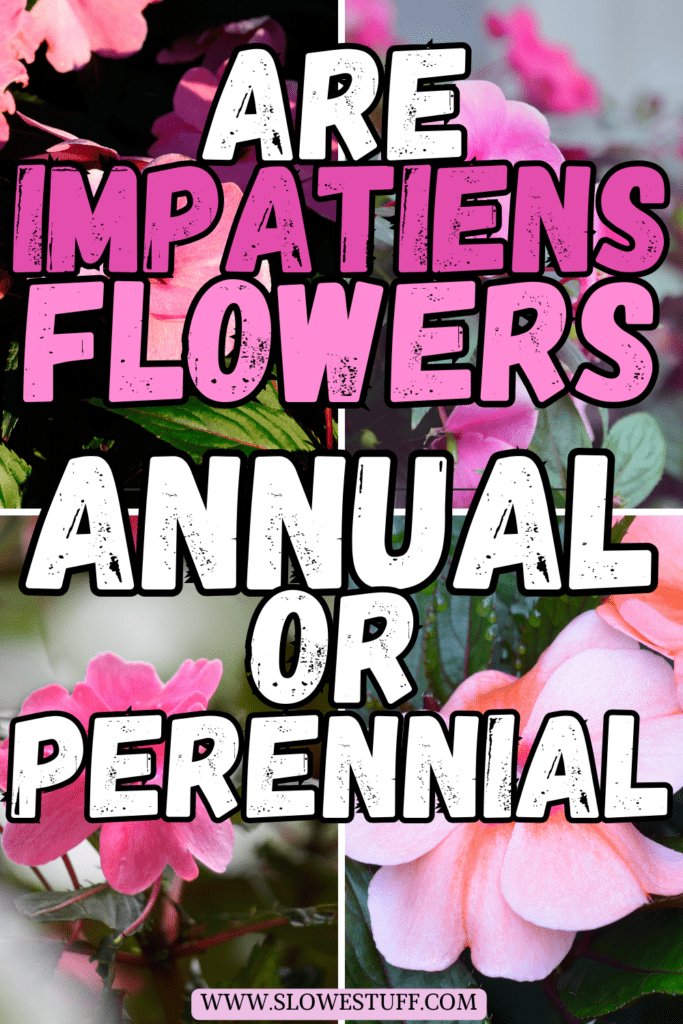
This post is part one of a gardening series asking if our favorite flowers are perennials. We are starting with our most beloved flower, the low maintenance, shade loving, prolific flower known as impatiens. So the question is – are impatiens perennials or annuals?
Check out the other parts of this series!
- Part Two is: Are Zinnias Perennials or Annuals?
- Part Three is: Are Gerbera Daisies Perennials?
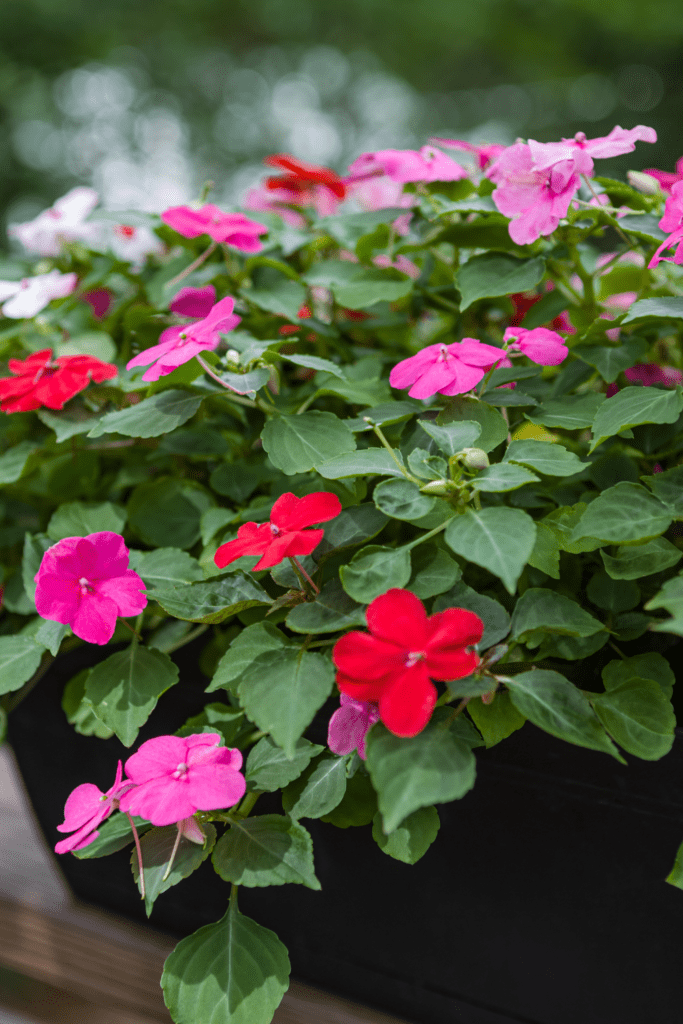
Disclaimer: Affiliate links may be included for ease of reference and convenience. If used for purchase, they will result in a small commission at no additional cost to the buyer.
Are Impatiens Perennials? It Depends…
It really depends on where you live!
Technically, Impatiens are perennials in frost-free climates (zones 10 and 11). The National Gardening Association has a plant database to find more details on the distinctions between annual and perennial impatiens based on climate zones. They indicate that impatiens are annuals for everyone who lives in a frost climate.
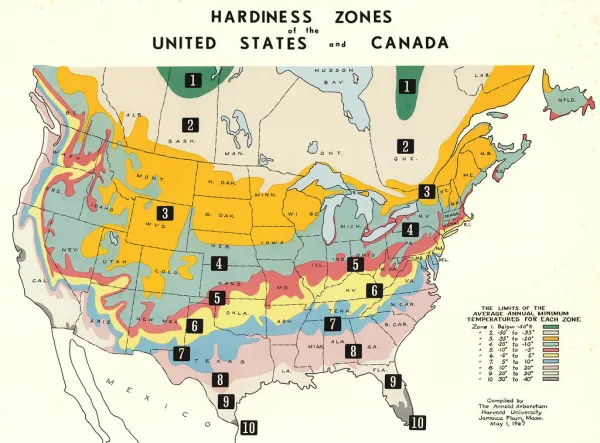
In the no frost zones, they can survive the winter and come back year after year. We are so jealous of you zone 10 and 11 gardeners!
We lived for many years in a subtropical climate in zone 8, and even as hot and humid as it was there, impatiens did not overwinter. So we feel comfortable saying that even in slightly colder regions, and certainly those with harsh winters, (zones 1-9), Impatiens have to be treated as annuals. They won’t survive the harsh temperatures and need to be replanted each spring.
They are really one of the many tropical plants that love that climate, but do really well for brief periods of time in less warm, muggy areas. No wonder they are one of the most popular bedding plants!
Types of Impatiens Plants

There are two main types of Impatiens:
- Busy Lizzie (Impatiens walleriana): This is the most common type of Impatiens, known for its abundant blooms and compact growth. It’s primarily grown as an annual due to its sensitivity to frost.
- New Guinea Impatiens (Impatiens hawkeri): These boast larger, bolder blooms and a bushier habit than Busy Lizzies. While some varieties can tolerate light frost, most are still treated as annuals in colder climates.
We typically buy the Busy Lizzie variety in late spring because they are usually sold in small 6 packs, so it is less expensive. The New Guineas are typically sold at a slightly higher price point, and we don’t remember ever seeing them in a six or four pack option. They are gorgeous though, and have interesting foliage as well as the spectacular colorful blooms that impatiens are known for.
If you live in one of the warm climates where these gorgeous flowers are perennial plants, impatiens are a great investment! You can’t beat the variety of flower colors to choose from. If they are in a spot they love, they will be low maintenance overachievers who will produce gorgeous blooms in bright colors for you all year long.
Ideal Growing Conditions for Impatiens
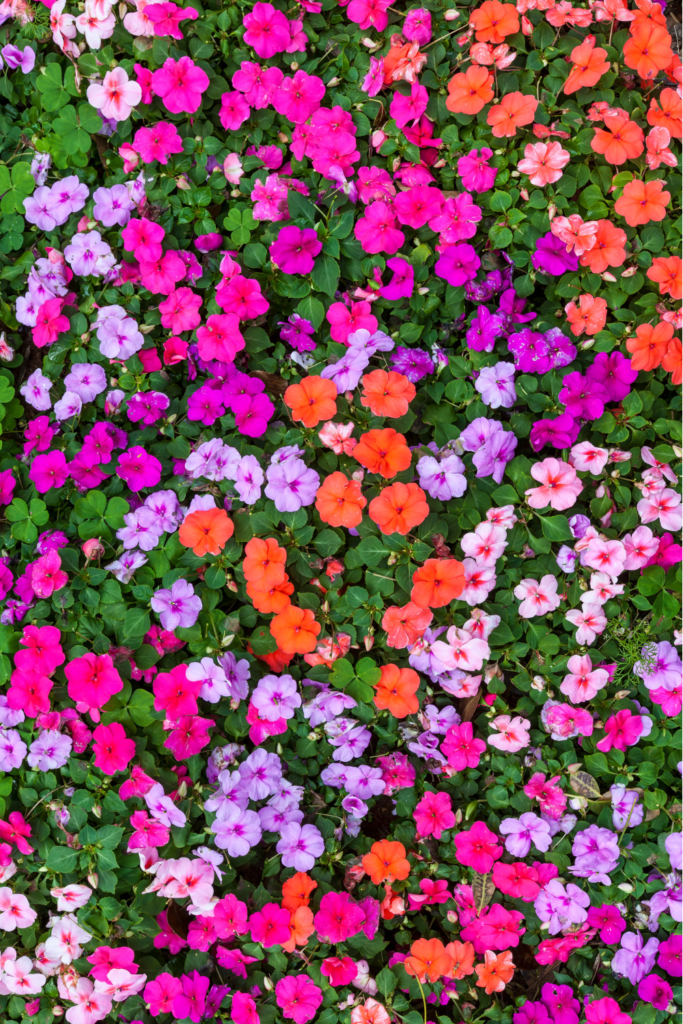
Impatiens are low-maintenance plants that thrive in specific conditions:
- Light: Impatiens prefer partial shade to full shade. They can tolerate some morning sun but struggle in hot, direct afternoon full sun, which can scorch their leaves and flowers. They thrive in shady areas or with afternoon shade.
- Soil: They need moist, well-drained soil rich in organic matter. Amend your soil with compost or aged manure before planting because you will need good drainage for optimal results.
- Temperature: Impatiens prefer moderate temperatures. As mentioned, they don’t tolerate frost so you have to cover them up if you have a risk of frost! They can also be damaged by extreme heat.
- Water: Consistent moist soil is key for the entire growing season. Water regularly, especially during hot weather, to prevent the soil from drying out completely.
We LOVE that Impatiens (which we repeatedly call and type as impatients, so if you see that typo, just know that we try but constantly think of them as impatients plants) are shade lovers! Now, we do love hostas and ferns, as well as other shade loving plants, but they don’t have the color pop that impatiens do.
If we can put them in morning sun, or spots that get dappled shade all day, this is when they seem to thrive the best! If you live in a warmer climate, this is probably a must in terms of where to plant them. If you live in a colder region, they might be able to tolerate more sun.
Impatiens will get a little wilty if they get dry, so keeping up with regular watering is vital to having those gorgeous color mounds in your pots or shady garden spot.
Are Impatiens Easy to Grow from Seed?

We REALLY wish they were. Well, we wish they were for the type of propagating we do. Which is to say, by throwing seeds on the ground, covering them with a bit of dirt and watering regularly until they germinate. We don’t start seeds indoors before the season. We like to do the chaos gardening style of seed starting.
So all that to say, growing Impatiens from seed can be challenging, especially for beginners. Seeds are tiny and require specific conditions for germination. However, if you’re patient (our biggest flaw) and have a warm, well-lit location, it can be successful.
If you are the patient type, start seeds indoors during the winter months, 6-8 weeks before the last frost date. They require warm temperatures (around 70°F) and consistent moisture to germinate. Once seedlings are established and the danger of frost has passed, you can transplant them outdoors.
Impatiens Propagate From Cuttings
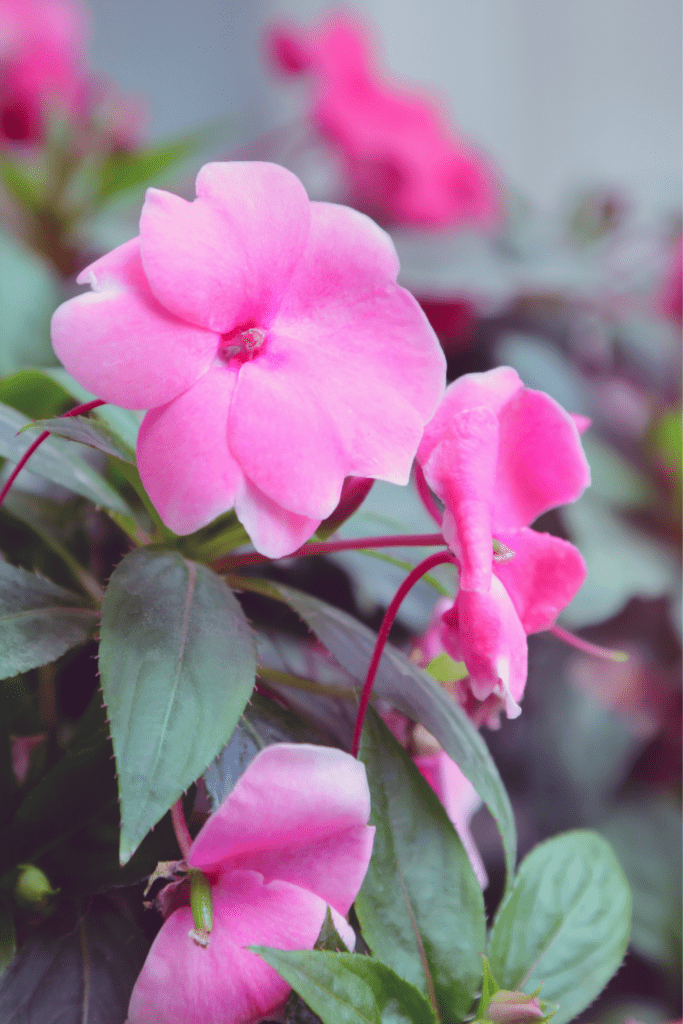
For us, buying established plants from the garden center, preferably in a little 6 pack from a nursery, is often the easier option. We also like to propagate by taking stem cuttings from healthy, non-flowering stems in early summer.
One option is to dip the cut end in rooting hormone and plant it in a pot with a well-draining potting mix. Keep the soil moist and provide indirect light. Roots should develop within a few weeks.
We are a little more lazy than that, so we either chop them and stick them directly back into the pot or, a better result has been to put them in a cute mason jar in a sunny window. They will keep blooming and will root in the water. Then we transfer to a pot!
Lately, we have come across a few propagation ideas that we thought were so cute! Check these out:
These are so perfect to pop propagation cutting in this year! For all of our favorite gardening items and tools, check out our storefront!
Planting Partners for Impatiens
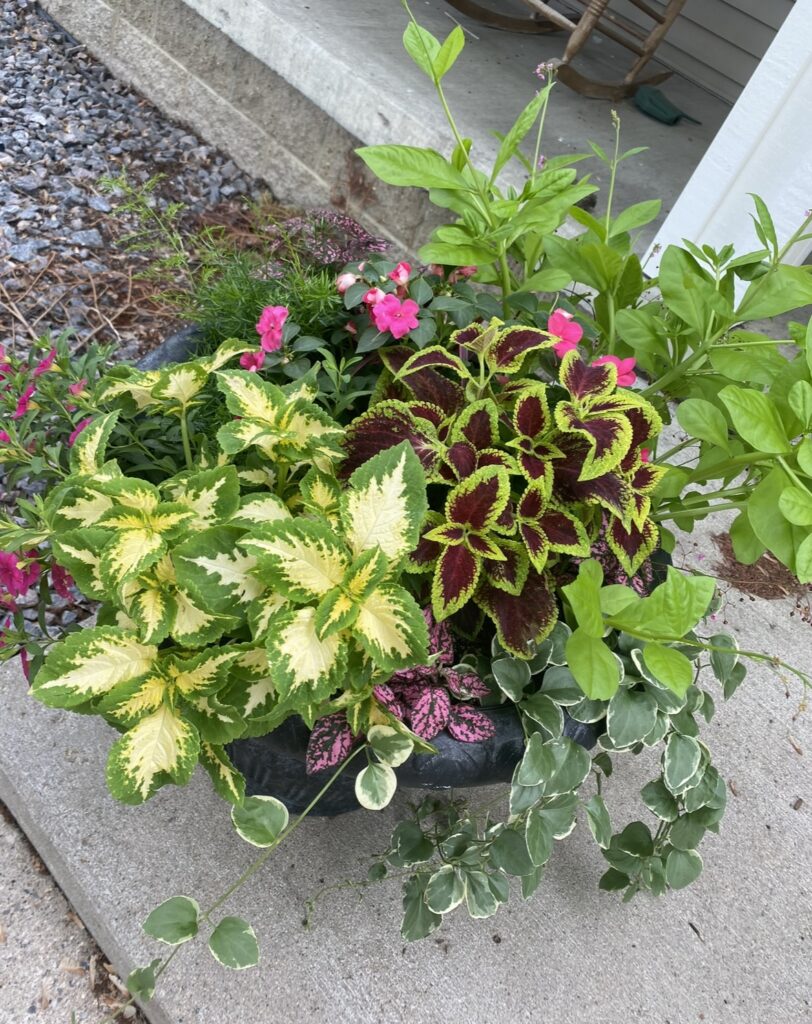
As we mentioned above, we love hostas and ferns in the shade, and they all go so well together with impatiens. They give foliage,while the impatiens give all the color! We like a lot of different leaf shape and textures. Here are some of our favorite companion plants we like to put with them in the garden, in container plantings or window boxes:
- Begonias: they have similar growing patterns and are hardy with gorgeous colors.
- Hostas: for the foliage! We love hostas interesting leaves, and they have a large variety of greens and blues, plus leaf size, to combine.
- Ferns: ferns have a completely different leaf shape from the hostas, so they add texture and dimension, plus are easy to grow.
- Fuchsias: these drooping, bell-shaped flowers create a cascading effect alongside Impatiens and we like the different types of flowers
- Caladiums: Planted as bulbs, they grow up to be taller than the impatiens with big leaves for contrast.
Beyond the Basics: Interesting Facts About Impatiens

- Impatient Seed Pods: Impatiens earned their name from their impatient seed pods. (HaHa!) When ripe, even a light touch can cause them to explode, scattering seeds far and wide.
- Downy Mildew: Unfortunately, Impatiens, particularly the Busy Lizzie (Impatiens walleriana), fell out of favor for a while because of downy mildew disease – a fungal disease that causes powdery mildew resulting in stunted growth, yellowing leaves, and wilting. Garden houses have been making great strides in creating resistant varieties of these beloved flowers, so this is less of a problem now, but it is good to keep an eye out for this.
- Pollinators: This is a big one for us! Impatiens are attractive to pollinators like bees and hummingbirds. To us, it is a rare plant that we want in our garden if it isn’t one that attracts birds and other pollinators! Impatiens have vibrant blooms and nectar production, so you can be sure to see lots of signs of life from the pollinators around.
Additional Tips for Impatiens
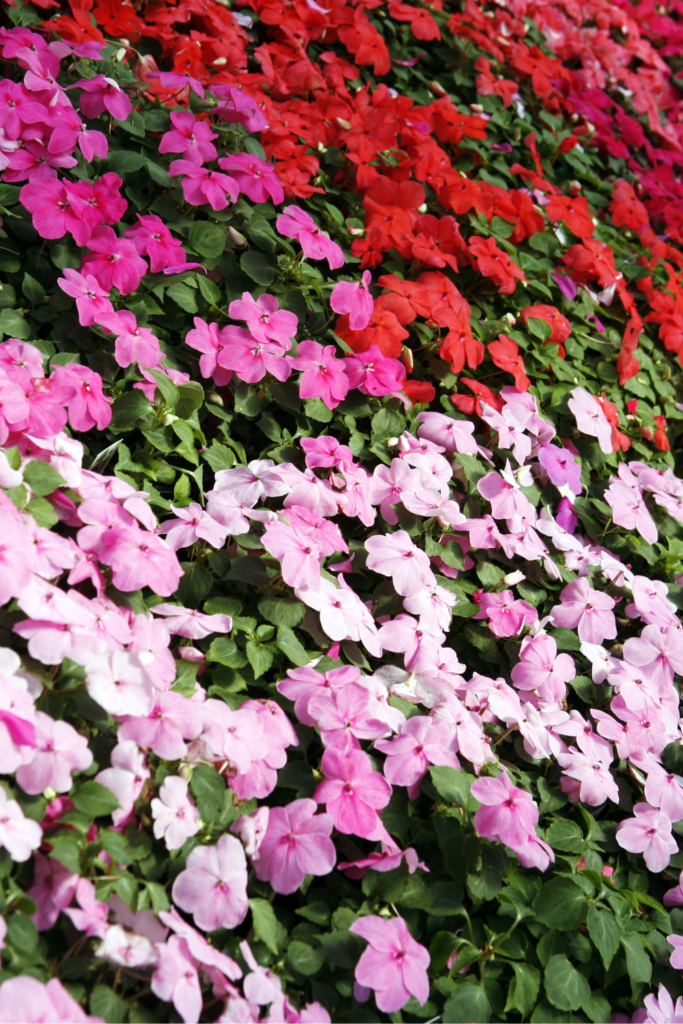
These are a pretty low maintenance plant, but they do benefit from a few small things.
Here are some additional tips for success with Impatiens:
- Pinch back leggy stems to promote bushier growth. We even give them a “haircut” once they get too leggy.
- Fertilize occasionally with a balanced fertilizer to maintain healthy growth and vibrant flowering. We used to use slow-release fertilizer that we would mix into the soil, but have recently changed over to water-soluble fertilizer. See our post on our fertilizer combination for stunning container plantings.
- Watch for signs of pests like spider mites, aphids or slugs and treat them promptly with organic methods whenever possible.
It is also recommended that you deadhead impatiens regularly, but we find they kind of take care of that themselves. We rarely deadhead impatiens and they still bloom like crazy.
Are Impatiens Perennials or Annuals?
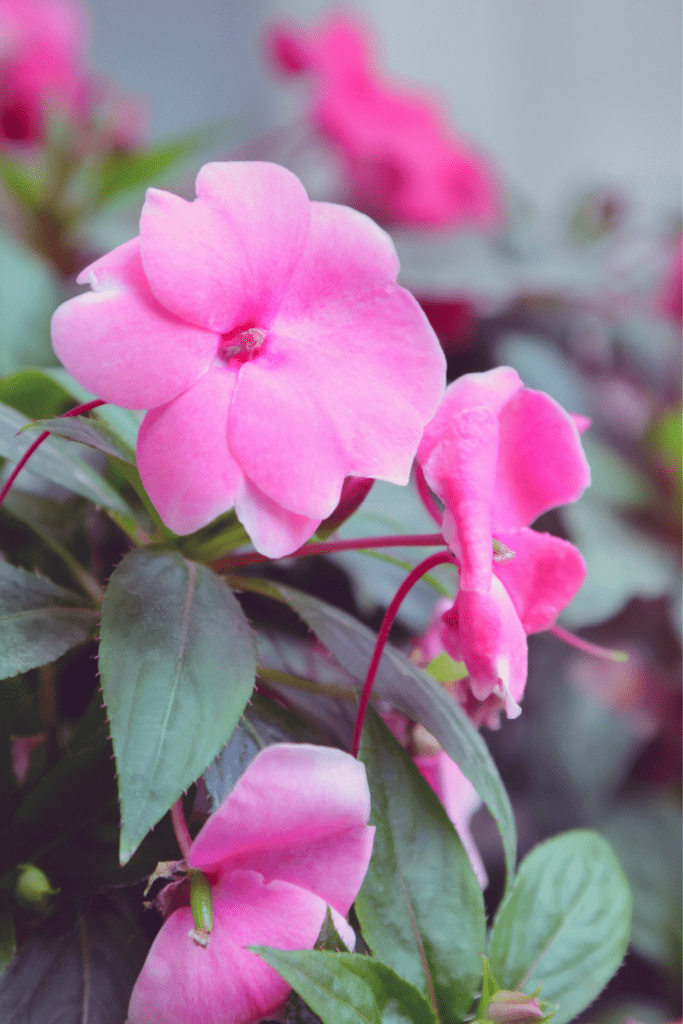
We hope that we have answered your question as to whether impatiens are perennials, and given you some additional answers to your burning questions about Impatiens, and that you add them to your gardening plans this year!
If you are looking for more gardening inspiration, check out our gardening section of the blog. It includes information on more of our favorite pollinator plants, raised garden beds, and gift ideas for gardeners too!
Happy Gardening!
Slowestuff
Love Gardening Content? Pin This Post to Find Us Again!
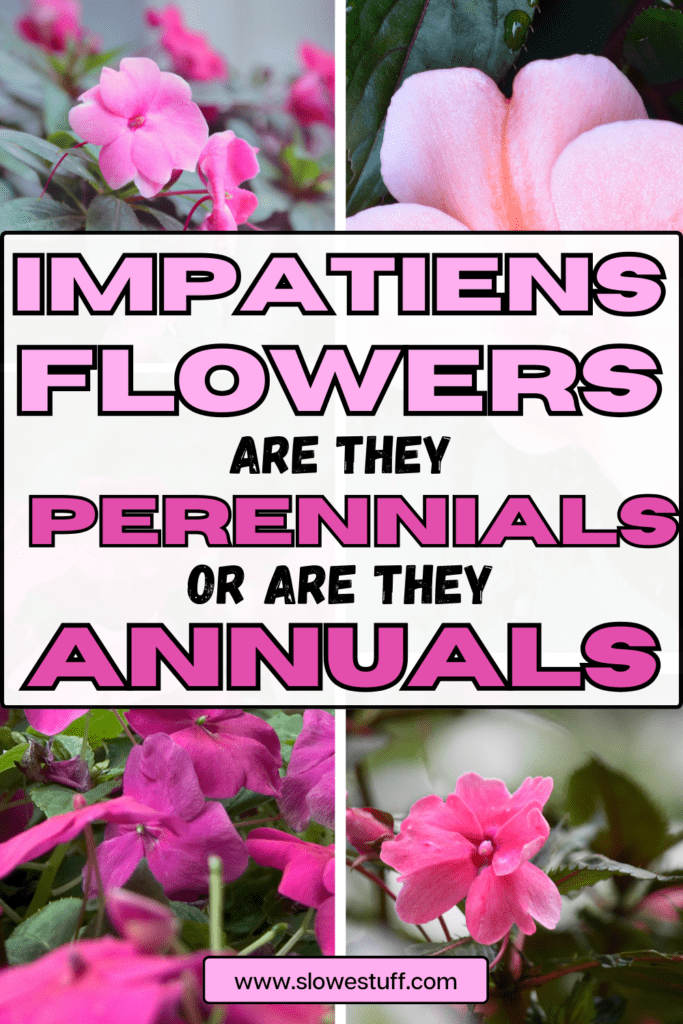
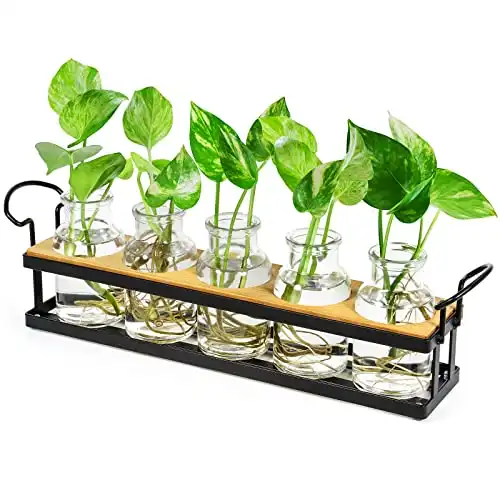
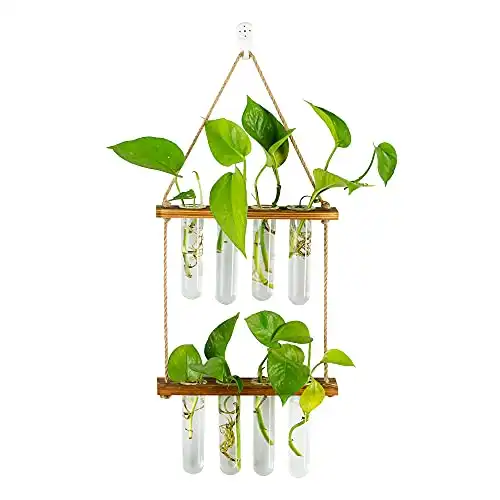
[…] This is part two of a series answering this question for all our favorite summer flowers, so be sure to check out our first part of the series answering the question – are impatiens perennials? […]